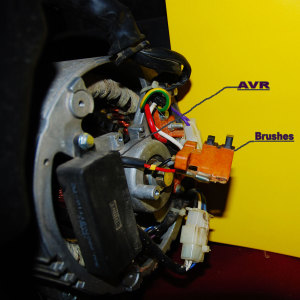By Chris Erwin
Almost everyone has had some reason at one time or another to use a portable generator. They are in huge demand after power outages caused by storms and other natural disasters. However, this short time usage is usually done to restore power to your house while the damage is being repaired.
Today, I want to cover portable generators as they pertain to the outdoors. If you’re camping or staying in a location that is off the grid, the value of a portable generator can’t be measured in dollars.
For the last 30 years, I have had a fish camp that is off the grid. We charge batteries for a long list of items including: our boats and run things like TVs, lights, air conditioners, cell phone charges and two-way radios.
As a result we have five different portable generators. I’m not telling you that you need a bunch of different generators. As most of you are not in my shoes when it comes to using them in the outdoors. However, I feel this gives me a lot of experience with their use, maintenance and how to get the most for your money from them.

The first question I get is usually “Why five different generators”? Let me explain: When in the outdoors, the generator should be sized for the task to be portable and not to waste fuel. While there is a thing called a continuous run generator, most of us don’t have the need or the money to spend on one. They cost thousands of dollars and unless you are running it continuously, it isn’t necessary. That said, we do at times run our generators for a week at a time, so we alternate two generators to prevent overheating them and damaging a single unit.
We use a small generator to power our boats’ needs, including things like trolling motor batteries. . Because our camp is a little distance from the water, this saves us the job of either pulling the boat out of the water or pulling the batteries to charge them. This generator is also handy when on the pontoon boat, which we use to stay in a remote location overnight.
Our big 6,000-watt generator is used to run power tools and air compressors. This is a larger generator than we want used to run the camp. The idea is to match the generator to the size of the job, so we are not wasting fuel.
When you buy a new generator, there are a few things you can do to prolong the life of the unit. The No. 1 thing is to break it in. To do this, we do a few things most people fail to do. (You won’t read this in the instructions of your new generator.) We remove the spark plug and add one tablespoon of motor oil to the cylinder. We put the spark plug back in, but do not connect the spark plug wire. We then pull the rope a couple of times. The aim is to lubricate everything. We then replace the spark plug with a new Champion or Autolite plug if the plug is an off-brand. The next thing is to make sure there is oil and gas in the unit. Then we start the generator and run one tank of gas through it without a load. This is the break-in. It seats the rings. We then change the oil to remove any shavings along with dirt and grit produced by the break-in.
We have generators that are 20 years old and still run today, which we credit it to our break-in methods.
After years of service, some generators will suddenly quit producing electric. We have found that 90 percent of the time, not counting blown breakers, it’s due to one of two things: the brushes are bad or the Automatic Voltage Regulator (AVR) has quit working. Both these are very easy to replace and should get you back up and running quickly.
If you have additional questions feel free to write me I will help if I can. Until next time keep your lines tight and take a kid fishing.


At the least this is more enlightening than one of those reality
TV stars, kim this? Joey what?